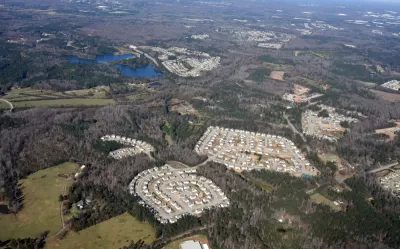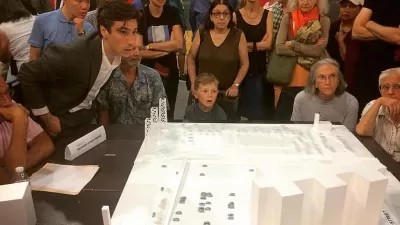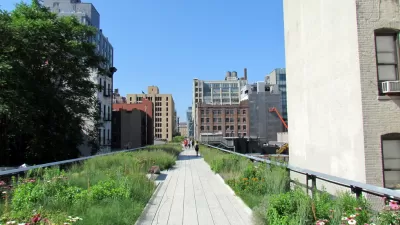Transforming suburban sprawl is a massive undertaking, but these small steps can help communities understand their needs and assets and develop clear, actionable goals for the future.

Pedestrianizing the suburbs might seem like a monumental challenge, writes Robert Steutenville, but a new report from the Congress for New Urbanism (CNU) and the Michigan Municipal League outlines a list of small, incremental steps that communities can implement to move toward less auto-oriented, more walkable and mixed-use neighborhoods. "Reorienting suburban neighborhoods for pedestrians requires an incremental yet integrated approach, calibrated to local needs, prioritized according to public aspirations, and targeted to specific areas within the community."
The list includes "proven techniques" drawn from successful projects from across the United States, ranging from identifying existing assets and future goals to aligning codes and ordinances to reforming parking regulations. These interventions act at a hyper-local level to identify community needs, leverage existing resources, and change regulations to support and anticipate higher density and pedestrian-friendly infrastructure. Adjusting land use regulations and parking requirements can go a long way toward "offering an alternative vision for existing buildings" and "adapting from placeless sprawl to walkable urbanism" by easing the way for adaptive reuse and denser development. "The process of rescaling suburban communities can be long and difficult, but seeing the road ahead will help a municipality measure their success, manage development outcomes, and maintain a sense of place amidst change."
FULL STORY: Incremental steps toward pedestrian-friendly suburbs

Study: Maui’s Plan to Convert Vacation Rentals to Long-Term Housing Could Cause Nearly $1 Billion Economic Loss
The plan would reduce visitor accommodation by 25,% resulting in 1,900 jobs lost.

North Texas Transit Leaders Tout Benefits of TOD for Growing Region
At a summit focused on transit-oriented development, policymakers discussed how North Texas’ expanded light rail system can serve as a tool for economic growth.

Using Old Oil and Gas Wells for Green Energy Storage
Penn State researchers have found that repurposing abandoned oil and gas wells for geothermal-assisted compressed-air energy storage can boost efficiency, reduce environmental risks, and support clean energy and job transitions.

Private Donations Propel Early Restoration of Palisades Playground
Los Angeles has secured over $1.3 million in private funding to restore the Pacific Palisades playground months ahead of schedule, creating a modern, accessible space that supports community healing after recent wildfires.

From Blight to Benefit: Early Results From California’s Equitable Cleanup Program
The Equitable Community Revitalization Grant (ECRG) program is reshaping brownfield redevelopment by prioritizing projects in low-income and environmental justice communities, emphasizing equity, transparency, and community benefits.

Planting Relief: Tackling Las Vegas Heat One Tree at a Time
Nevada Plants, a Las Vegas-based nonprofit, is combating the city’s extreme urban heat by giving away trees to residents in underserved neighborhoods, promoting shade, sustainability, and community health.
Urban Design for Planners 1: Software Tools
This six-course series explores essential urban design concepts using open source software and equips planners with the tools they need to participate fully in the urban design process.
Planning for Universal Design
Learn the tools for implementing Universal Design in planning regulations.
Ascent Environmental
Borough of Carlisle
Institute for Housing and Urban Development Studies (IHS)
City of Grandview
Harvard GSD Executive Education
Toledo-Lucas County Plan Commissions
Salt Lake City
NYU Wagner Graduate School of Public Service




























